In September 2015 we issued a second release of our study about what could look like a MCT, taking into account most recent hints from SpaceX, especially its supposed preference for a single core launcher and for a dual launch to LEO (spaceship and refueling tanker).
Unfortunately, this second report, which shows a more convincing configuration than the first one, was published in French only on our website (planete-mars.com). A visitor of the Reddit website issued a translation, but this one was published rather as a forum entry than as a publication.
As numerous English speaking people visited the English part of our website to access the first release of our study (this one having been translated), we propose in this short paper a summary of the conclusions that we reached in this second phase. This synthesis gives:
- the principal configuration options which have been retained
- the main characteristics (dimensional, propulsive) of the Mars Shuttle and the launcher stage
- a series of renderings
Feel free to send your comments / questions through our website.
Richard Heidmann
Space Propulsion Engineer,
Vice-President Assocation Planète Mars, French chapter of The Mars Society
Principal configuration options
- Full reusability (launcher and Mars Shuttle)
- LOX-Methane propulsion for all manoeuvers except for attitude control and rescue capsule propulsion
- Mars Shuttle main engines in ventral position (to allow horizontal landing)
- Single stage launcher, with contribution of Shuttle propulsion system to achieve LEO
- Two launches to LEO:
- first: a Shuttle modified as a tanker (unmanned)
- then: the Mars Shuttle itself, with its 100 mT payload
- rendezvous and Mars Shuttle refueling
- Conjunction type return, to avoid big propellant storage tanks on Mars (with a 52 months duty cycle as a consequence…)
- Mars aerodynamic capture, in three steps: aerocapture, aerobraking, entry
- Aerodynamic formula: lifting body with only control fins (no wings), designed for both Mars and Earth entries
- Fully reusable metallic TPS (allowed by small ballistic coefficient)
- Mars horizontal landing (easier and safer unloading)
- Earth horizontal and propulsive landing (no wings, light undercarriage)
- During launches and landings, passengers stay in an emergency capsule, extractible through splitting Shuttle nose. Storable propellants. Propulsive landing.
- Possible use an auxiliary electric propulsion:
- at a low power level for easy integration in the Shuttle
- 100 kW, 6 mT incl. 4.5 mT of propellant
- reducing transfer durations (-50 days to Mars)
Main Characteristics
| Payload on Mars | |||
|---|---|---|---|
| 90 mT (Mars at perihelion), | including 100 passengers as a maximum | ||
| Launcher | |||
| GLOW | 7750 mT | ||
| Propulsion | 31 LOX-CH4 engines, sea-level thrust: 2940 kN, vac.Isp: 363s | ||
| Diameter | 12.5 m | ||
| Total height | 111 m (including Shuttle) | ||
| Shuttle | |||
| Length | 41 m | ||
| Diameter | 12 m | ||
| Dry mass | 109 mT | ||
| Propulsion | 4 LOX-CH4 engines (same as launcher), with extendable nozzles, vac.Isp: 380 sT | ||
| Tanks capacity | 1100 mT | ||
| Emergency capsule | |||
| Wet mass | 10 mT | ||
| Propulsion | 4 x 310 kN storable propellants, pressure-fed engines | ||
| Propellant mass | 1.6 mT |
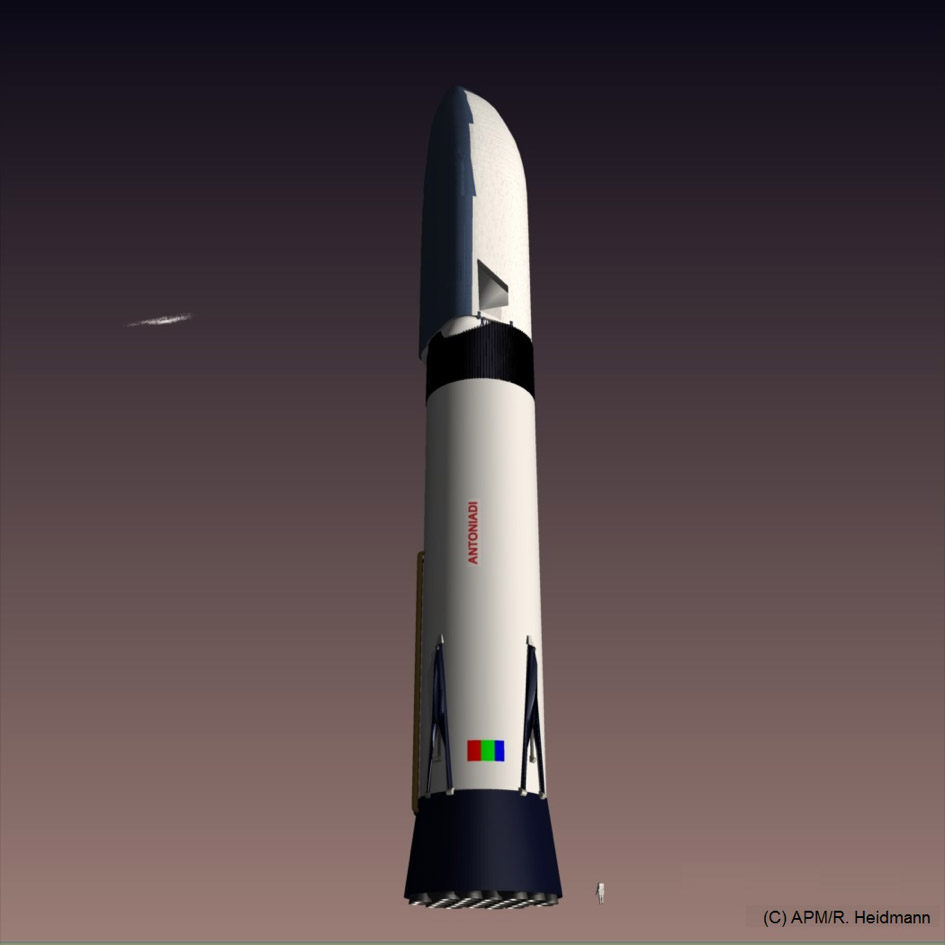
This single stage configuration of the MCT at launch is the simplest we can imagine, but implies a dual launch in order to refuel the Shuttle before TMI. Its dimensions, reduced from those of our first study, are still impressive (7750 mT GLOW, 111 m height) and the propulsion bay sports 31 300T-thrust engines.
Note: the Raptor is said to be scaled at a 230T-thrust level. If this is confirmed, it could mean that the actual launch configuration is different from this one; or will the propulsion bay host an even greater pack of engines?
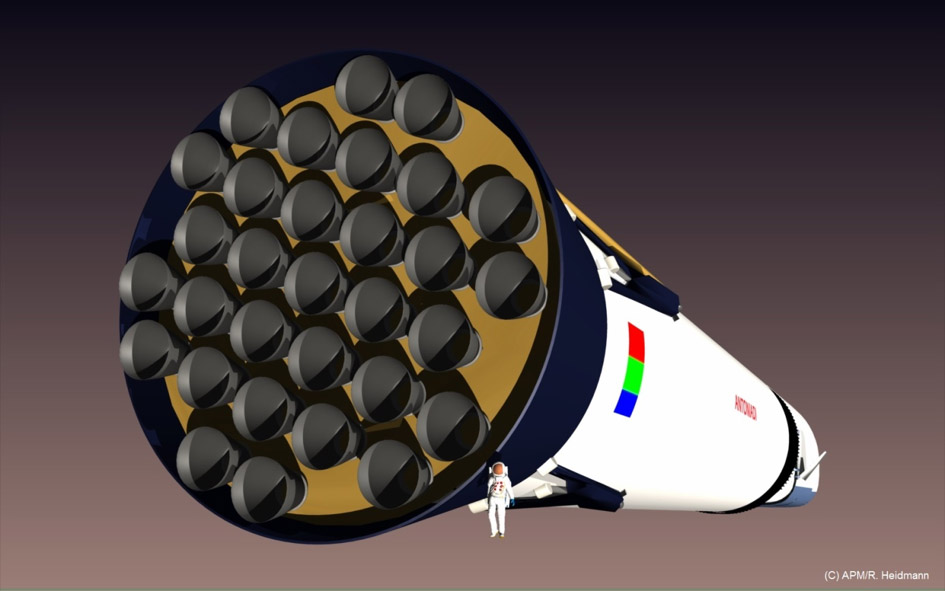
Rear view of the MCT in launch configuration, showing the dense pack of engines. The 12.5m core diameter has to be enlarged to 15m at the base in order to accommodate this pack.
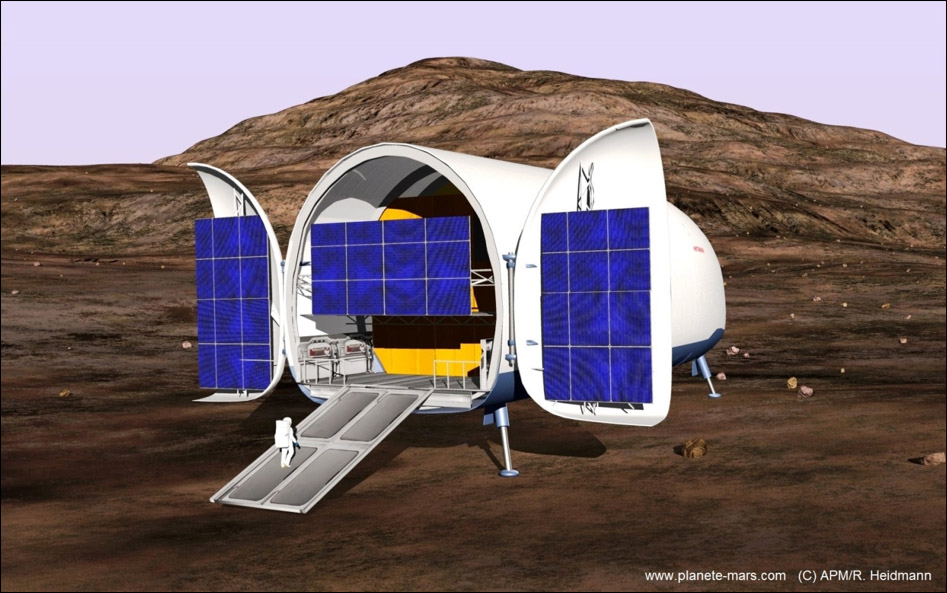
Landed on Mars. Main cargo bay is open, with the unloading ramp deployed.
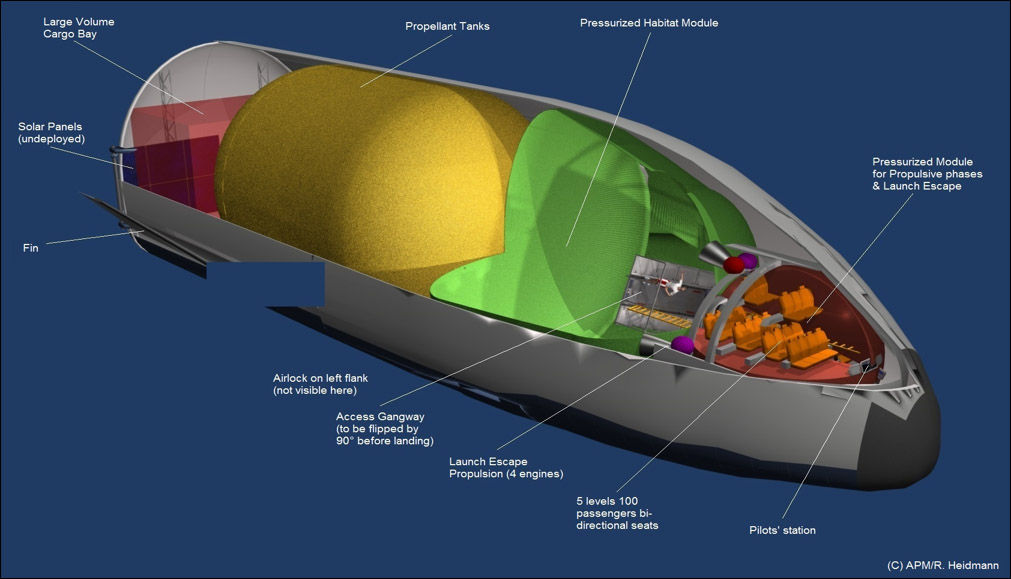
Cutaway view of the Shuttle. Ventral engines are not visible. Note the 100 seats-emergency capsule in the nose of the spaceship.
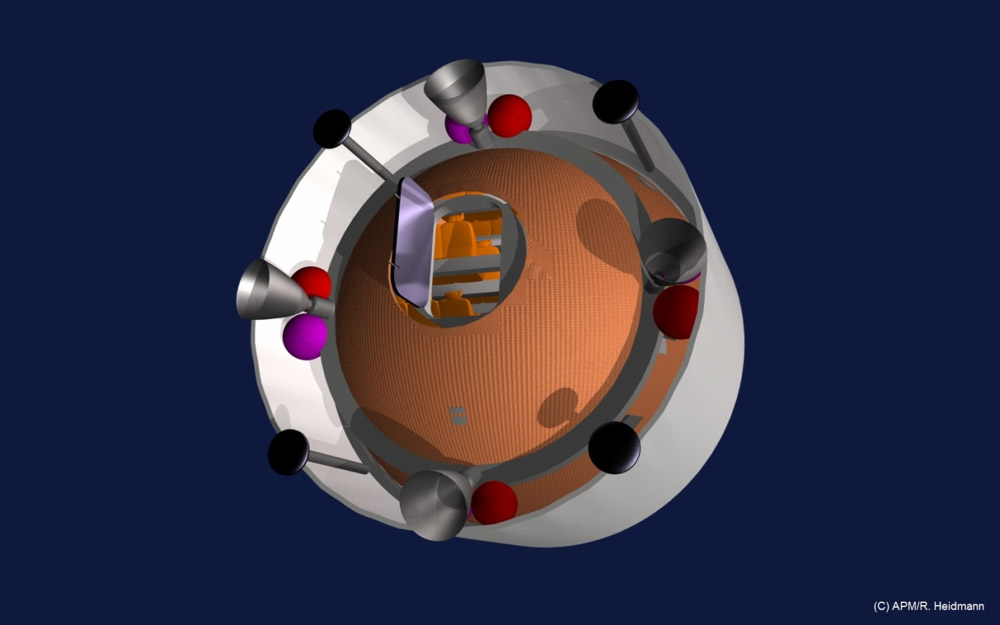
Rear view of the emergency capsule, with its four storable propellants engines and landing legs shown deployed.



